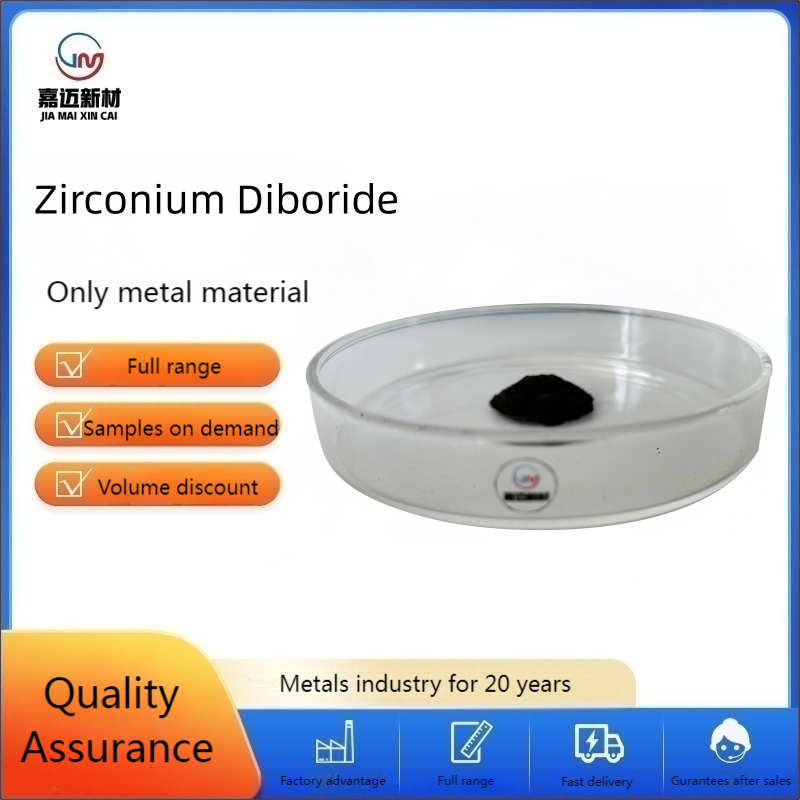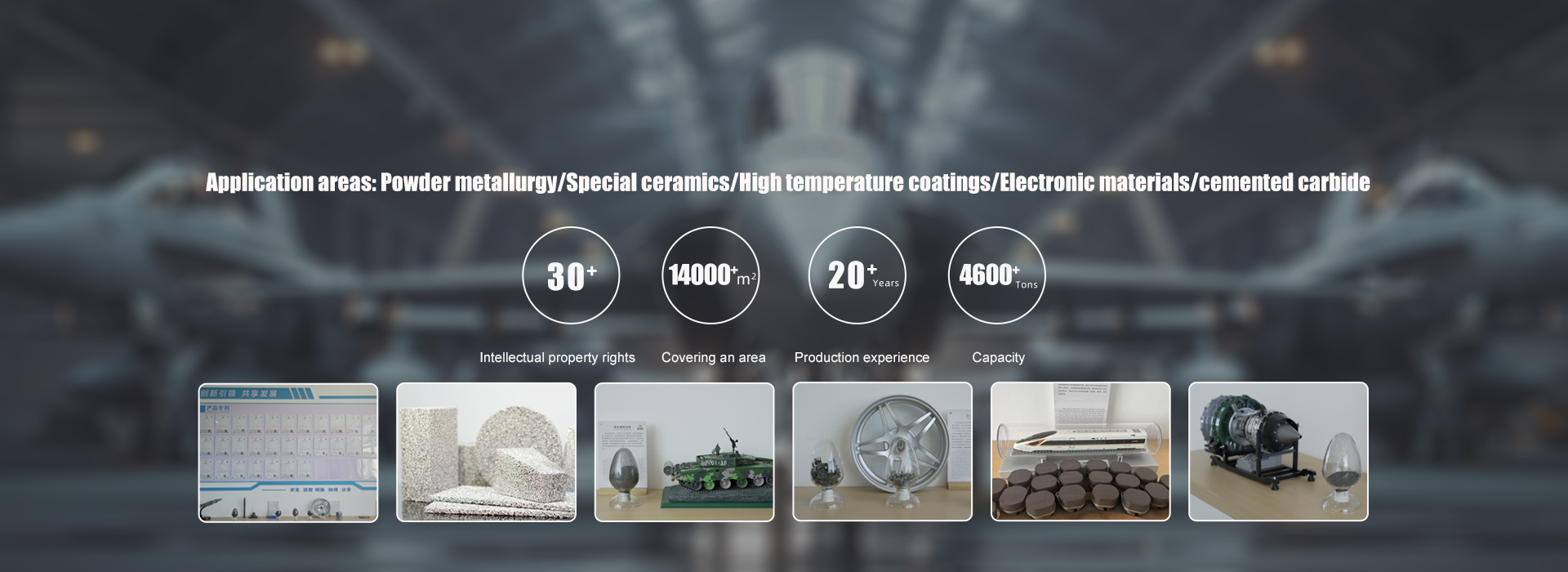
C/C ceramic matrix composites have a series of excellent properties, such as low density, low coefficient of thermal expansion, high specific strength, good heat shock resistance, etc., and are ideal high-temperature structural materials in aerospace, mechanical engineering and other fields. However, the mechanical properties of C/C ceramic matrix composites decrease rapidly due to oxidation ablation in high temperature aerobic environment. Therefore, the research on the oxidation ablation resistance of C/C ceramic matrix composites has attracted much attention, and coating technology is an effective means to improve the oxidation ablation resistance of C/C composites. Ultra-high temperature zirconium boride ceramics have high melting point, high hardness and good oxidation resistance and ablative properties, and are widely used in C/C ceramic matrix composites for high temperature oxidation protection. A single zirconium boride ceramic coating will oxidize to form zirconia and B2O3 with low melting point, but B2O3 will quickly evaporate above 1100 ℃, resulting in the formation of a porous oxide skeleton. Therefore, the protection effect of single zirconium boride ceramic coating at high temperature is not ideal. In order to make up for this deficiency, silicon-based ceramics are introduced into the zirconium boride ceramic coating as the second phase, and the oxygen inhibition effect is achieved by forming a multiphase glass film.
Plasma spraying is a coating preparation method in which the raw material powder is heated to melt or semi-molten state and sprayed onto the substrate surface by plasma flame flow as a heat source to form a coating. It is one of the most important methods for preparing ultra-high temperature protective coatings. In the plasma spraying process, the agglomerated ZrB2/MoSi2 composite agglomerated powder is easy to break during the conveying process. The main reason for the powder breaking is that the particle structure inside the agglomerated powder relies on the binder bonding, and the strength is very low. In the powder conveying process, the powder particles will not only rub and squeeze each other in the powder feeder. After entering the powder pipe, it will still have friction and collision with the particles around the pipe wall, so it is easy to cause particle breakage during the transportation process. Direct spraying of agglomerated powder will affect the uniformity and continuity of powder delivery in the spraying process, resulting in poor microstructure uniformity and stability of coating.
In order to make up for the shortage of ZrB2/MoSi2 agglomerated powder, the agglomerated ZrB2/MoSi2 composite agglomerated powder was densified by plasma densification process. The influence of plasma densification process parameters on the properties of the powder was studied, and the ZrB2/MoSi2 coating was prepared by plasma spraying process. The ablation test of the plasma spraying coating was carried out, and the test results were analyzed and discussed.
1 Test
1.1 Powder and coating preparation
Using ZrB2 and MoSi2 fine particle size powder from Qinhuangdao Ynuo High-tech Material Development Co., Ltd. as raw materials, ZrB2/MoSi2 composite agglomeration powder was prepared by spray drying agglomeration granulation method. The equipment used was LGZ-8 spray dryer of Wuxi Dongsheng Spray Drying Machinery Factory. Plasma densification of agglomerated ZrB2/MoSi2 composite agglomerated powder was carried out by TekNamo/Sphero 80 plasma preparation system of Teknamo Plasma Systems, Inc. The main technical parameters are shown in Table 1. The obtained ZrB2/MoSi2 composite aggregate powder was controlled by mechanical screening method.
Table 1 Plasma densification process parameters
| parameter | Parameter Power (kW) | Ar flow rate (L/min) | H2 flow rate (L/min) | Powder feed rate (g/min) |
| 1 | 75 | 120 | 15 | 25 |
| 2 | 75 | 120 | 15 | 50 |
Before spraying ZrB2/MoSi2 coating, the oil stains and stains on the surface of the substrate were cleaned with alcohol. Metco F4 atmospheric plasma spraying equipment was used for spraying, and the matrix size was Φ25 mm × 8 mm. The process parameters of plasma spraying were shown in Table 2.
Table 2 Plasma spraying process parameters
| Power (kW) | Ar flow rate (slpm) | H2 flow rate (slpm) | Powder gas flow rate (L/min) |
Powder feed rate (g/min) |
Spraying distance (mm) |
| 55 | 50 | 10 | 4 | 10 | 110 |
The ablative performance of the coating was tested by oxypropane ablative equipment. The flow rates of oxygen and propane were 28 L/min and 12 L/min, respectively. The oxypropane gun was vertically aimed at the sample surface, and the ablation time was 300 s. The ablation process was shown in Figure 1.

FIG. 1 Test process of coating ablative resistance
1.2 Characterization of sample structure and properties
The microstructure of ZrB2/MoSi2 powder and plasma sprayed ZrB2/MoSi2 coating were analyzed by scanning electron microscope (SEM, Hitachi SU5000). The bulk density and fluidity of ZrB2/MoSi2 powder were characterized by Hall current meter (SK-1002). The oxygen content of ZRB2 / MoSI2 powder before and after plasma densification was measured by pulsed infrared oxygen nitrogen hydrogen analyzer (ONH-P). The sphericity of the powder was measured by field emission scanning electron microscope (IT700), and the phase composition of the powder was measured by X-ray diffraction the analyzer (Bruker D8A X) is used for testing.
2. Results and analysis
2.1 Analysis of powder microstructure and properties
The surface morphology of the agglomerated ZrB2/MoSi2 composite agglomerated powder prepared by spray drying agglomerated granulation process is shown in Figure 2. It can be seen from Figure 2 (a) that most of the particles of agglomerated ZrB2/MoSi2 composite agglomerated powder are nearly spherical, and from the enlarged particle morphology of agglomerated ZrB2/MoSi2 composite agglomerated powder (Figure 2 (b)), it can be seen that the surface of agglomerated ZrB2/MoSi2 composite agglomerated powder is rough. It can be seen from the surface that there are pores in the agglomerated powder. The formation of rough and porous powder surface may be caused by the difference of particle size and shape of raw materials and the evaporation of gas in powder during spray drying.


Figure 2 Surface morphology of agglomerated ZrB2/MoSi2 composite agglomerated powder: (a) low fold; (b) High magnification
In order to further observe the internal microstructure of the agglomerated pelletizing powder, the profile microstructure of the agglomerated ZrB2/MoSi2 composite powder was analyzed (FIG. 3). The internal microstructure of the powder was loose and porous, and the size of the internal micro-particles was about 1~5 μm, and the distribution was relatively uniform.
The physical properties of the agglomerated ZrB2/MoSi2 composite powder were tested (Table 3). The test results showed that the bulk density of the agglomerated ZrB2/MoSi2 composite powder was 1.56g /cm3, and the fluidity was 52.45s /50g. Oxygen content is 0.61 wt.%. The bulk density of the agglomerated powder is low, the powder contains organics such as binders, and the oxygen content in the powder is high.


Figure 3 Profile morphology of agglomerated ZrB2/MoSi2 composite agglomerated powder: (a) low multiplier; (b) High magnification
Table 3 Physical properties of agglomerated ZrB2/MoSi2 composite agglomerated powder
| Physical properties |
Agglomerated ZrB2/MoSi2 Composite aggregate powder |
| Loose packing density (g/cm3) | 1.56 |
| Liquidity (s/50g) | 52.45 |
| Oxygen content (wt.%) | 0.61 |
The microstructure of ZrB2/MoSi2 composite agglomeration powder after plasma densification was analyzed, as shown in Figure 4. The sphericity of ZrB2/MoSi2 composite powder after plasma densification is up to 96%, and the powder has high sphericity. When the powder feeding rate is 25 g/min, the fine particles inside the powder melt together, and the powder densification degree is higher. However, for high melting point ceramic powders, if the internal structure of the powder particles is too dense, it will not be conducive to the melting effect of the powder in the plasma spraying process and affect the deposition efficiency of the powder. When the powder feeding rate increases to 50 g/min, some fine particles inside the powder are not completely melted together, and the powder structure will have a good spraying adaptability in the subsequent plasma spraying process.


FIG. 4 Profile morphology of ZrB2/MoSi2 composite agglomeration powder after plasma densification treatment with different feed rates: (a) 25 g/min; (b) 50 g/min
The phase composition of ZrB2/MoSi2 composite powder before and after plasma densification was analyzed. The XRD pattern of ZrB2/MoSi2 composite powder before and after plasma densification is shown in Figure 5. It can be seen from the figure that the powder before and after plasma densification is mainly composed of ZrB2 and MoSi2 phases. The results showed that the powder did not oxidize during the plasma densification process.

Figure 5 XRD pattern of ZrB2/MoSi2 composite powder
The physical properties of ZrB2/MoSi2 composite agglomerated powder after plasma densification were tested (Table 4). The results show that when the powder feeding rate is 25 g/min, the bulk density and fluidity of the powder are 3.51 g/cm3 and 21.0s /50g, respectively. Compared with the agglomerated powder, the bulk density and fluidity are increased by 125 % and 59.96 %, respectively. When the powder feeding rate is increased to 50g /min, the bulk density and fluidity of the powder are 3.26 g/cm3 and 21.5s /50g, respectively. Compared with the agglomerated powder, the bulk density and fluidity are increased by 108.97% and 59.01 %, respectively. After plasma densification treatment, the bulk density of powder obtained at different feeding rates increased and the fluidity became better. With the increase of powder feeding rate, some particles are not fully densified, resulting in a slight decrease in powder loose density. However, the high melting point of zirconium boride and the high densification degree will not be conducive to the spraying adaptability of ZrB2/MoSi2 powder. The oxygen content of the powder after plasma densification was tested. When the powder feeding rate was 25 g/min and 50 g/min, the powder oxygen content was reduced to 0.04 wt.% and 0.05 wt.%, respectively. Because the powder was in a protective atmosphere during the powder plasma densification process, the powder did not oxidize. The reduction of powder oxygen content is due to the removal of organic compounds such as binders in the agglomerated powder. Therefore, considering the powder delivery rate of 50 g/min as the appropriate plasma densification parameter, the ZrB2/MoSi2 composite powder prepared by the densification process was subsequently selected for plasma spraying to prepare the coating.
Table 4 Physical properties of ZrB2/MoSi2 composite powder after plasma densification treatment
| Physical properties | Powder Feed rate 25 g/min | Powder feed rate 50 g/min |
| Loose packing density (g/cm3) | 3.51 | 3.26 |
| Liquidity (s/50g) | 21.0 | 21.5 |
| Oxygen content (%) | 0.04 | 0.05 |
2.2 Microstructure and ablative resistance of coating
Plasma spraying coating was prepared by plasma densified powder with a feed rate of 50 g/min, as shown in FIG. 6
Microstructure of ZrB2/MoSi2 coating cross section. It can be seen from FIG. 6 (a) that the coating has a dense structure and is well combined with the base material. There are no penetrating cracks in the coating, but there are some tiny pores in the coating because the particles are not sufficiently melted. The results show that the ZrB2/MoSi2 spray powder is heated uniformly in the plasma flame flow, the flattening degree is high after striking the substrate, and the microstructure distribution in the coating is uniform. The relatively dense coating structure lays a good foundation for the improvement of the ablative resistance of ZrB2/MoSi2 coating.
Figure 7 (a) and 7 (b) respectively show the macroscopic morphology of the coating before and after ablation. It can be seen that the surface of the coating is white after being ablated by the flame flow, and zirconia and borosilicate are produced after ablation. Borosilicate exists in a molten state during the ablation process and has a low oxygen diffusion coefficient, which can block oxygen and prevent external oxygen from penetrating into the interior. After ablation, the coating remained intact and no spalling occurred, indicating that the prepared ZrB2/MoSi2 had good high-temperature ablation resistance.


Figure 6 Cross section morphology of ZrB2/MoSi2 coating: (a) low multiplier; (b) High magnification


Fig. 7 Morphologies of the coating before and after ablative: (a) before, (b) after
3 Conclusion
(1) ZrB2/MoSi2 powder was prepared by spray drying and plasma densification process, and the effects of densification treatment on the microstructure and physical properties of the powder were analyzed. After plasma densification treatment, the bulk density and fluidity of the powder were significantly improved. When the powder feeding rate was 50 g/min, The loose packing density and fluidity of ZrB2/MoSi2 powder were 3.26 g/cm3 and 21.5s /50g, respectively. Compared with agglomerated powder, the loose packing density and fluidity were increased by 108.97 % and 59.01 %, respectively.
(2) The ZrB2/MoSi2 coating was prepared by atmospheric plasma spraying process. The microstructure of the coating was uniform and dense. After the ablation test, the coating remained intact and did not flake off, indicating that the prepared ZrB2/MoSi2 coating had good high-temperature ablation resistance.








